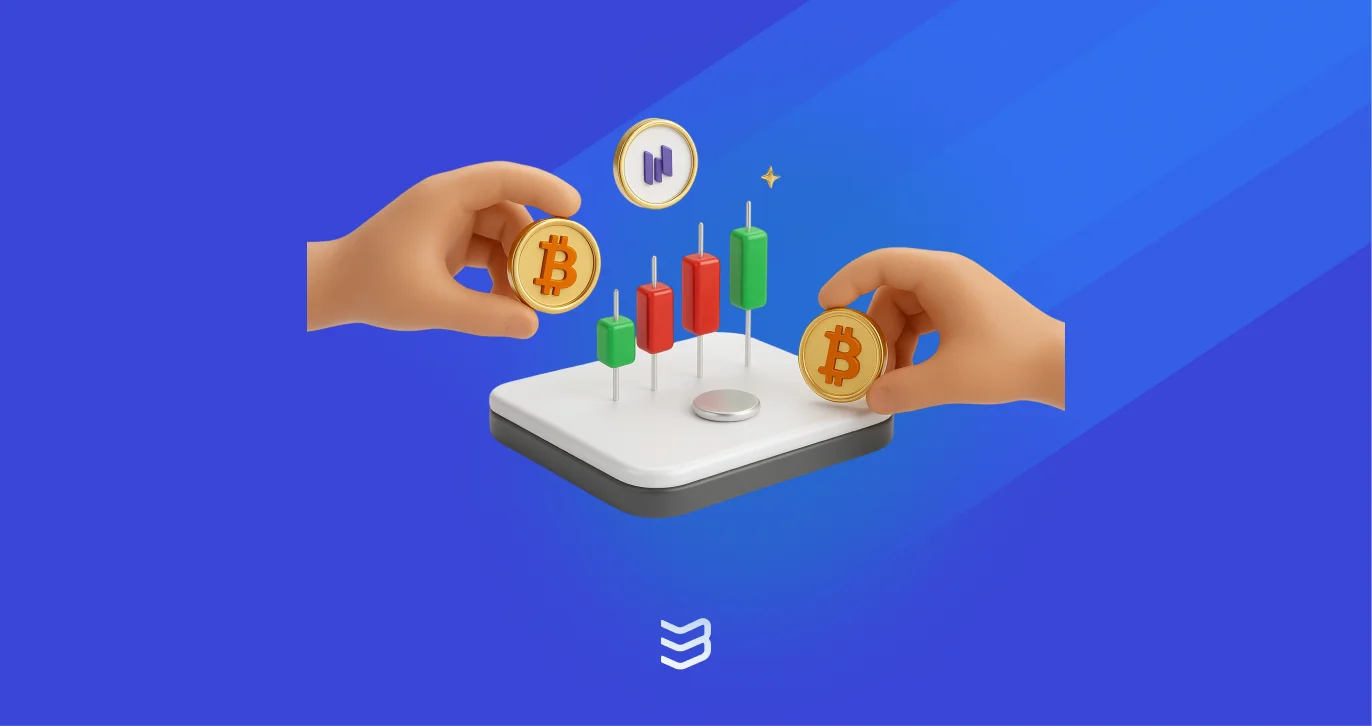tl;dr
- Web3 fundraising shares similarities with Web2, including VCs and angel investors, but also introduces funding options like DAOs, token sales, and grants.
- Projects use a mix of fundraising methods, including IDOs, private token sales, venture DAOs, ecosystem grants, and fair launches, each with unique advantages and risks.
- Overpromising, poor communication, flawed tokenomics, and security vulnerabilities are major risks; realistic roadmaps and strong security practices are essential for success.
An Introduction to Web3 Funding
Building a Web3 dApp or blockchain isn’t too different from launching a traditional tech startup, both require funding, development, and market fit. Web3 funding methods also resemble Web2, with VCs, angel investors, and incubators playing key roles. However, Web3 introduces unique fundraising avenues like token sales, DAOs, grants, and community-driven funding.
In this article, we’ll explore the best fundraising strategies for Web3 projects, compare them to Web2 models, and highlight key differences.
Understanding the Web3 Fundraising Landscape
Whether you're seeking investment for a decentralized app, protocol, or blockchain, understanding the evolving Web3 funding landscape is crucial.
Key Differences from Traditional Fundraising:
The Web3 fundraising landscape blends traditional VC funding with decentralized alternatives like DAOs, token sales, and grants. While centralized VCs still play a role, Web3 projects can leverage decentralized funding through community-driven mechanisms.
Tokenomics is crucial, as projects often raise capital by issuing tokens that align incentives between investors and users. DAOs enable governance and funding decisions, while grants from blockchain foundations provide non-dilutive capital.
Unlike Web2 startups, Web3 communities can actively fund and market projects, making community engagement a powerful driver of success.
Common Web3 Fundraising Models
Typically, web3 projects tend to combine a few fundraising models to fund what they’re building. These combinations can include merging private token sales with an IDO for example.
IDOs
Web3 projects have several fundraising models, each with unique advantages. Initial DEX Offerings (IDOs) and Initial Coin Offerings (ICOs) are pretty much identical with the only real change being the name. IDOs allow projects to raise capital by selling tokens directly to the public. At its peak in 2017, ICOs used to raise hundreds of millions for projects. In the current era, IDOs tend to raise much more humble amounts.
Private Token Sales
Private token sales offer early investors discounted token allocations before a public launch. These private sales usually depend on a SAFT (Simple Agreement for Future Tokens) contract, which is an agreement between a web3 project and an investor.
Venture DAOs
DAO Treasury Funding leverages Decentralized Autonomous Organizations (DAOs) to allocate community-governed funds. Venture DAOs act as decentralized venture capital, pooling investments from token holders. However, the first and most famous Venture DAO suffered a serious hack. The DAO Hack of 2016 saw $50M in ETH stolen due to a vulnerability.
Ecosystem Grants
Grant programs from blockchain foundations provide non-dilutive funding, fostering ecosystem growth.
Fair Launches
Fair launches are primarily used for memecoins on platforms like Pump.Fun. These launches aim to eliminate insider advantages by ensuring no pre-mining or pre-sales, everyone gets equal access at launch. However, like ICOs in 2017, fair launches have become a breeding ground for rug-pulls and scam projects, making due diligence crucial.
Essential Best Practices for Web3 Fundraising
There are several steps for entrepreneurs to raise funds for a web3 project. Here’s a brief rundown:
Crafting a Compelling Whitepaper and Pitch Deck
A well-structured whitepaper and pitch deck are the foundation of any successful Web3 fundraising campaign. These documents must be clear, concise, and informative, helping investors and community members understand the project’s vision and potential.
Key elements include a problem statement that defines the issue being solved, a solution explaining how the project addresses it, and a tokenomics breakdown detailing distribution, utility, and incentives. A roadmap with realistic milestones builds credibility, while showcasing an experienced team adds confidence. The goal is to make a convincing case for why your project deserves funding and community support.
Building a Strong and Engaged Community
In Web3, the community is often as valuable as the technology itself. A loyal, engaged community can drive organic marketing, increase adoption, and even provide financial backing. Successful projects prioritize active communication through Discord, Telegram, and Twitter, ensuring transparency and fostering trust.
Hosting regular AMAs, governance discussions, and development updates keeps the community involved. Incentives like airdrops, staking rewards, or exclusive access to features further strengthen engagement. A well-managed community becomes an asset that attracts investors and users alike.
Developing a Sustainable Tokenomics Model
Tokenomics can make or break a Web3 project. A well-designed model ensures long-term sustainability, avoiding issues like excessive inflation or poor utility. The allocation of tokens should strike a balance between investors, developers, and community incentives while avoiding centralization risks.
Utility is crucial. Tokens must serve a purpose beyond speculation, whether for governance, staking, transaction fees, or ecosystem incentives. Additionally, mechanisms like vesting schedules and token burns help maintain long-term value and prevent early investor dumps.
Strategic Partnerships and Collaborations
Forming alliances with established projects, influencers, and blockchain ecosystems can amplify reach and credibility. Partnerships with prominent exchanges, wallets, and DeFi platforms can improve accessibility and liquidity for the project’s token.
Networking within the Web3 space also opens doors for co-marketing opportunities, integrations, and cross-promotions that can accelerate adoption. A strong partnership strategy strengthens a project’s legitimacy and expands its user base.
Effective Marketing and Communication Strategies
A project’s success depends on how well it communicates its vision. Leveraging social media marketing, influencer collaborations, community-driven AMAs, and high-quality content helps spread awareness.
Consistency is key. Messaging should remain clear, frequent, and aligned with the project’s roadmap. Educational content, blog posts, and video explainers can position the project as a thought leader in its niche.
Security and Transparency
Given the risks in Web3, prioritizing security and transparency is non-negotiable. Conducting smart contract audits from reputable firms reduces vulnerabilities. Transparent on-chain reporting reassures investors, demonstrating integrity and accountability.
Maintaining an open-source approach, sharing treasury reports, and implementing community governance mechanisms ensure continued trust and long-term success.
Avoiding Common Pitfalls in Web3 Fundraising
While Web3 fundraising offers unique opportunities, it also comes with significant challenges. Many projects fail not due to lack of innovation but because they fall into common traps that undermine credibility and long-term success.
Overpromising and Underdelivering
Many Web3 projects fail because they make grand claims without a realistic plan to achieve them. Setting unrealistic expectations can generate initial hype, but failure to deliver erodes trust and damages the project's reputation. Transparency is crucial—teams should provide clear, achievable roadmaps and frequent updates while avoiding exaggerated claims. Investors and community members value honesty over hype, making it essential to balance ambition with feasibility.
Neglecting Community Engagement
Ignoring the community is one of the quickest ways for a project to lose momentum. Web3 is inherently decentralized, and success often depends on strong community backing. Failing to listen to feedback, address concerns, or maintain active communication can lead to disinterest and even project abandonment. Engaging the community through regular updates, governance participation, and AMAs builds long-term trust and ensures continued support.
Poor Tokenomics Design
A poorly structured token economy can lead to inflation, lack of utility, or excessive centralization. Unsustainable emission rates or high initial allocations to insiders can discourage long-term holding and harm market stability. A well-balanced token model should ensure fair distribution, clear use cases, and mechanisms to support long-term value. Without solid tokenomics, even the best projects can struggle to maintain investor confidence.
Security Vulnerabilities
Smart contract exploits have cost the Web3 space billions in lost funds. Many projects rush their launches without conducting thorough security audits, leaving them vulnerable to attacks. Ensuring rigorous smart contract audits, bug bounty programs, and regular security assessments is essential for protecting investor funds and maintaining credibility. A secure project is a trusted project, and prioritizing security can prevent catastrophic failures.






